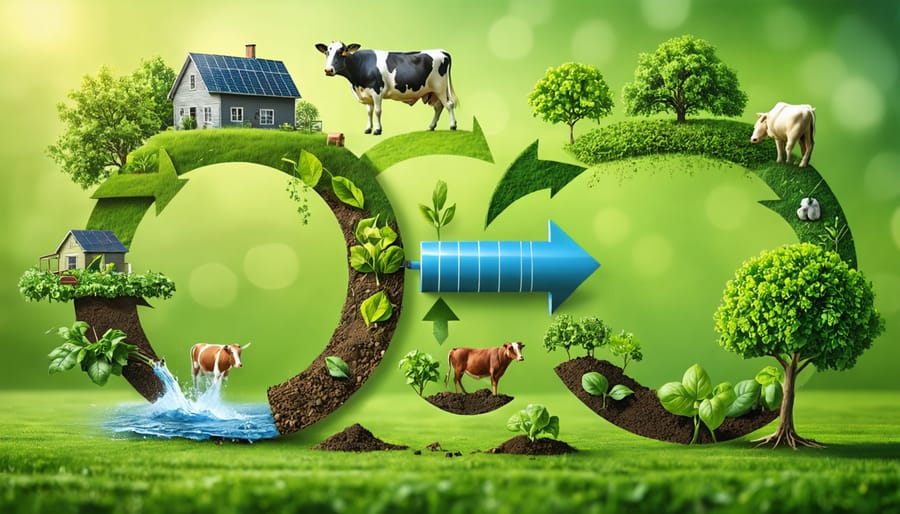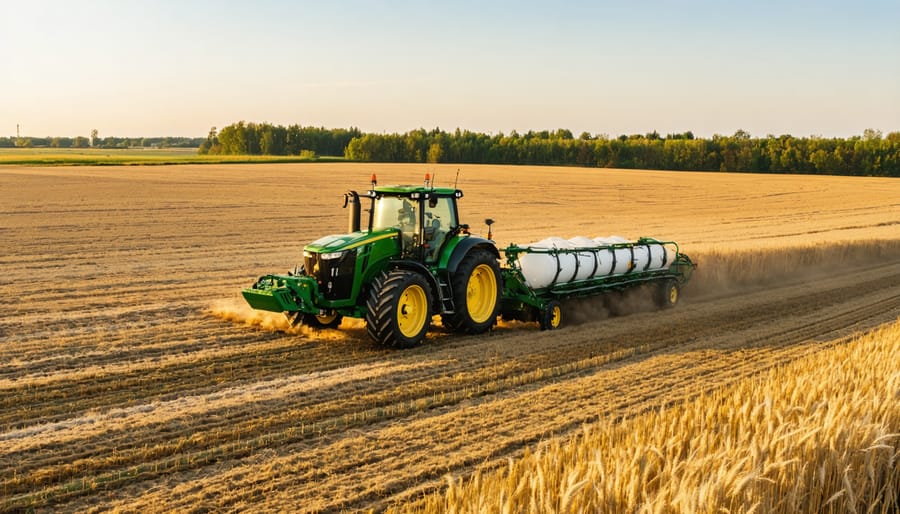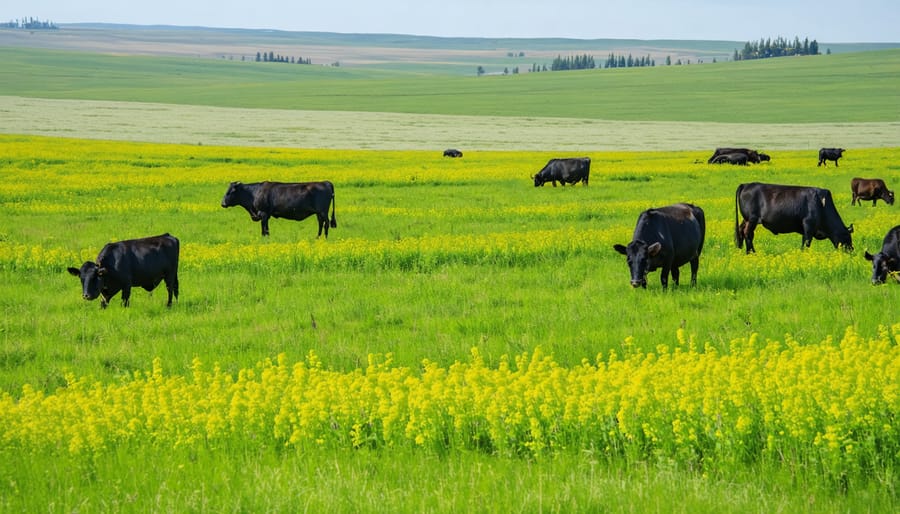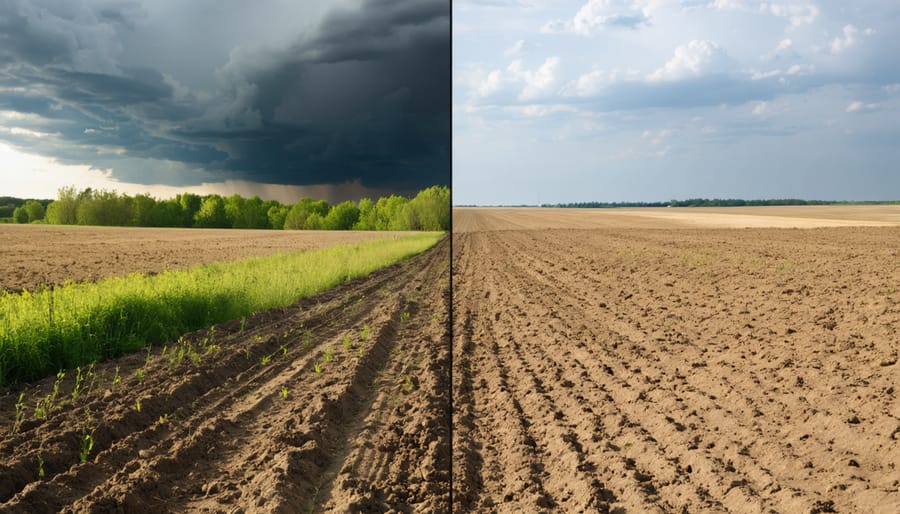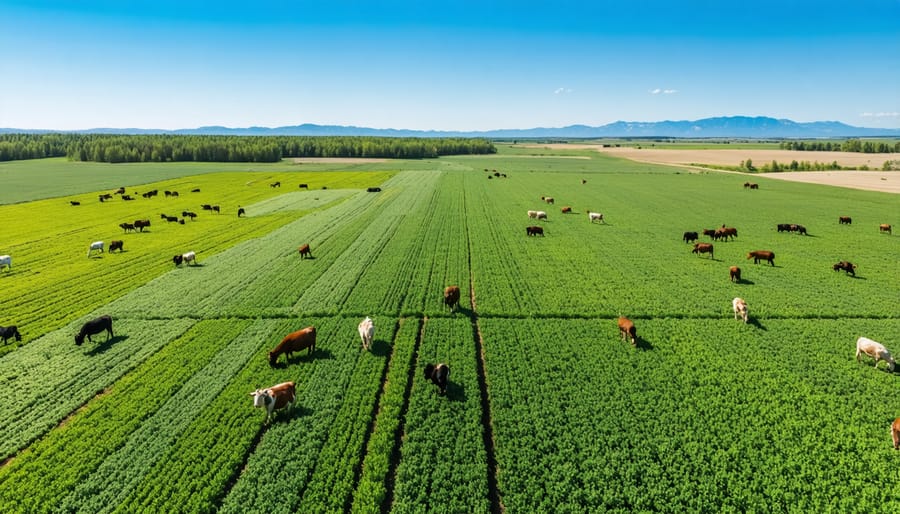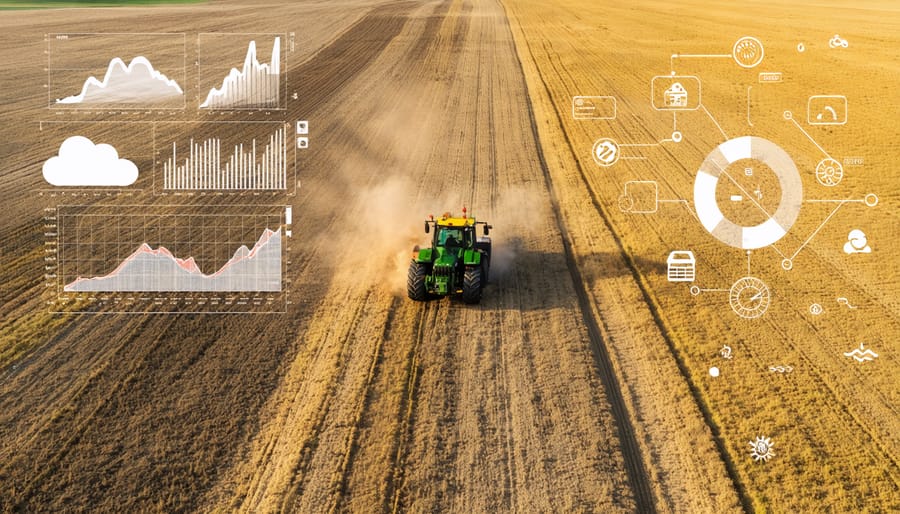Organic farming stands at the forefront of agricultural sustainability in Canada, where innovative producers are transforming traditional farming landscapes into regenerative ecosystems. Across Alberta’s diverse agricultural regions, farmers are discovering that organic practices not only protect our soil and water resources but also deliver compelling economic returns. Recent data from Agriculture Canada shows organic farms reduce greenhouse gas emissions by up to 40% compared to conventional operations, while building soil organic matter at three times the rate. This regenerative approach has sparked a revolution in Canadian agriculture, with organic farmland in Alberta expanding by 25% since 2020. As global markets increasingly demand sustainable food solutions, organic farming emerges as both an environmental imperative and a strategic business decision for forward-thinking producers. The integration of traditional knowledge with modern organic techniques creates resilient farming systems that withstand climate challenges while supporting local food security and rural economic development.
The Circular Economy Revolution in Canadian Organic Farming
From Waste to Resource: The Circular Agriculture Model
In organic farming, the circular agriculture model transforms traditional waste streams into valuable resources, creating a self-sustaining system that benefits both the environment and farm profitability. Here in Alberta, farmers are increasingly adopting circular practices by composting crop residues, utilizing livestock manure as fertilizer, and implementing innovative waste reduction strategies.
Take the example of the Morrison Family Farm near Red Deer, where they’ve developed a closed-loop system that converts vegetable scraps and animal bedding into rich compost, reducing their external input costs by 40% annually. Their system demonstrates how waste from one farming activity becomes a resource for another, creating a continuous cycle of nutrients.
Key elements of circular agriculture include crop rotation with nitrogen-fixing legumes, integrated livestock-crop systems, and on-farm biogas production. These practices not only minimize waste but also build soil health and reduce greenhouse gas emissions. Local studies show that farms implementing circular principles typically see a 25-30% reduction in input costs within the first two years.
By viewing farm waste as a potential resource, Canadian farmers are discovering new opportunities to enhance their operation’s sustainability while maintaining productive yields.
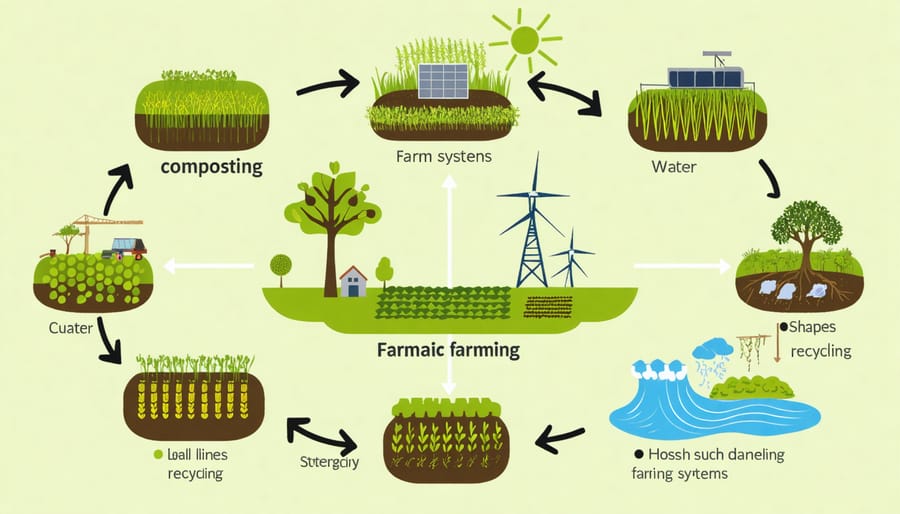
Alberta’s Unique Circular Farming Opportunities
Alberta’s unique landscape and agricultural heritage provide exceptional opportunities for circular farming practices. Many farmers across the province are adopting integrated farming systems that maximize resource efficiency while minimizing waste. The region’s diverse agricultural zones, from prairie grasslands to parkland areas, create natural synergies for crop rotation and livestock integration.
Local success stories include the Henderson Family Farm near Red Deer, which has implemented a closed-loop system where cattle grazing helps regenerate soil health while providing natural fertilization. Their approach has reduced input costs by 30% while increasing soil organic matter by 2% over five years.
The province’s strong agricultural community networks facilitate knowledge sharing and resource exchange between neighboring farms. For example, grain producers partner with livestock operations to utilize crop residues and manure effectively. These partnerships have created resilient local food systems while reducing transportation costs and environmental impact.
Climate-smart practices like winter greenhouses powered by renewable energy are gaining traction, allowing year-round production despite Alberta’s challenging weather conditions. These innovations demonstrate how circular farming principles can be adapted to local conditions while supporting long-term sustainability.
Practical Implementation Strategies
Composting and Nutrient Cycling
Composting and nutrient cycling form the backbone of sustainable organic farming, creating a closed-loop system that reduces waste and builds soil health. By implementing effective soil regeneration practices, Alberta farmers can significantly reduce their dependence on external inputs while improving their soil’s fertility.
On-farm composting transforms agricultural waste into valuable organic matter. Local farmers report success with windrow composting, particularly during our warmer months from May to September. The process involves layering nitrogen-rich materials (like fresh grass clippings and manure) with carbon-rich materials (such as straw and dried leaves) in a 30:1 carbon-to-nitrogen ratio.
Many Alberta farmers have developed innovative nutrient cycling systems. For instance, the Morrison Family Farm in Red Deer integrates livestock rotation with crop production, using cattle manure to fertilize fields and crop residues as animal feed. This approach has reduced their fertilizer costs by 40% while improving soil organic matter content by 2% over five years.
To maximize nutrient cycling efficiency, consider:
– Establishing dedicated composting areas away from water sources
– Monitoring compost temperature (maintaining 55-65°C)
– Using cover crops to prevent nutrient leaching
– Implementing crop rotation to optimize nutrient uptake
– Testing soil regularly to track improvements
Remember, successful nutrient cycling takes time, but the long-term benefits for soil health and farm sustainability make it worth the investment.
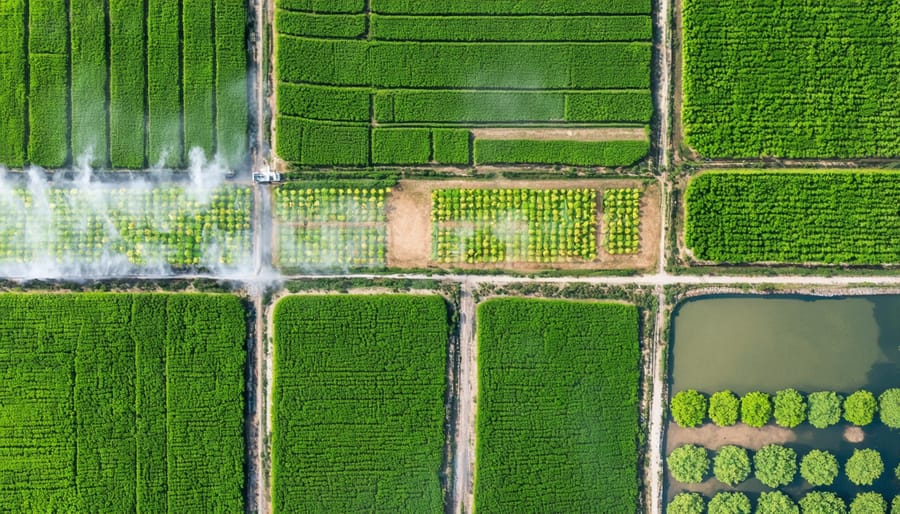
Water Conservation and Recycling
In Alberta’s semi-arid climate, effective water management is crucial for organic farming success. Many local farmers have adopted innovative water conservation techniques that not only preserve this precious resource but also enhance soil health and crop yields.
Drip irrigation systems have become increasingly popular among organic farmers in the region, reducing water usage by up to 70% compared to traditional sprinkler systems. These systems deliver water directly to plant roots, minimizing evaporation and preventing water waste. Calgary-based farmer Sarah Thompson reports saving over 500,000 litres of water annually since implementing drip irrigation on her 40-hectare organic farm.
Rainwater harvesting has emerged as another vital practice, with many farms installing collection systems on barn roofs and other structures. The collected water can be stored in tanks or ponds for use during dry periods. Some innovative farmers have integrated these systems with greenhouse operations, creating closed-loop water cycles.
Water recycling strategies include capturing and treating greywater from washing facilities for irrigation purposes. Many Alberta organic farms have implemented constructed wetlands that naturally filter water while providing habitat for beneficial insects and birds. These systems typically process up to 1,000 litres of water daily during peak season.
Soil moisture monitoring using sensors helps farmers optimize irrigation timing and volume. Combined with weather forecasting data, this technology enables precise water application, reducing overall consumption while maintaining optimal growing conditions.
Energy Efficiency and Renewable Integration
Energy efficiency plays a crucial role in making organic farming operations more sustainable and cost-effective. Alberta farmers are increasingly adopting renewable energy solutions to power their operations while reducing their environmental impact and operating costs.
Solar panels have become particularly popular among organic farmers in Southern Alberta, where abundant sunshine provides excellent conditions for solar energy generation. Many farms are installing ground-mounted or roof-mounted solar systems to power irrigation systems, grain dryers, and storage facilities. For instance, the Peterson Family Farm near Lethbridge generates 75% of its annual energy needs through a 40-kilowatt solar array.
Wind energy is another viable option, especially in areas like Pincher Creek, where consistent wind patterns make turbine installation worthwhile. Small-scale wind turbines can power farm equipment and provide supplementary energy during peak usage periods.
Innovative precision agriculture techniques are helping farmers optimize their energy usage through smart monitoring systems and automated controls. These systems can reduce energy consumption by up to 30% while maintaining or improving crop yields.
Biogas digesters are gaining traction among mixed organic operations, converting animal waste and crop residues into renewable energy. The Twin Valley Farms project demonstrates how a medium-sized operation can become energy self-sufficient through integrated renewable systems while creating additional revenue streams from excess energy production.
Many local agricultural cooperatives now offer support and resources for farmers interested in transitioning to renewable energy, including guidance on available grants and installation expertise.
Success Stories: Alberta’s Circular Organic Pioneers
The Thompson Family Farm Transformation
Located just outside of Olds, Alberta, the Thompson Family Farm stands as a shining example of successful circular economy implementation in organic farming. In 2015, Sarah and Mike Thompson inherited their 400-hectare conventional grain farm and embarked on a three-year journey to transform it into a sustainable organic operation.
The Thompsons began by implementing a closed-loop system where nothing goes to waste. They integrated livestock, primarily heritage breed chickens and sheep, into their crop rotation system. The animals naturally fertilize the soil while controlling weeds and pests, eliminating the need for synthetic inputs.
Their innovative composting system processes all organic waste from both farm operations and their small market garden. This compost is then used to enrich their soil, resulting in a 25% increase in soil organic matter over five years. The farm also captures rainwater through a series of sustainable drainage systems, reducing their reliance on groundwater by 40%.
Perhaps most notably, the Thompsons created partnerships with local restaurants and food processors to utilize their crop residues and imperfect produce. This initiative not only eliminated waste but also opened new revenue streams, increasing their annual revenue by 30%.
Today, the Thompson Family Farm produces certified organic grains, vegetables, and free-range eggs while serving as a learning center for other Alberta farmers interested in circular farming practices. Their success demonstrates that sustainable organic farming can be both environmentally responsible and economically viable.
Community-Led Initiatives in Red Deer County
Red Deer County has emerged as a hub for innovative community-led organic farming initiatives, demonstrating the power of collaborative approaches to sustainable agriculture. The Clearwater Organic Collective, established in 2019, connects over 30 local organic farmers who share resources, equipment, and knowledge while operating a successful community-supported agriculture (CSA) program serving 200 families.
One standout project is the Red Deer Food Loop, where five organic farms work together to create a closed-loop system. Crop residues from one farm become compost for another, while livestock manure is processed into organic fertilizer at a centralized facility. This initiative has reduced waste by 75% and decreased input costs for participating farmers by approximately 40%.
The County’s Seed Saving Network, comprising 25 organic farmers, preserves heritage crop varieties adapted to local growing conditions. Members exchange seeds and maintain a seed bank containing over 150 locally-adapted varieties, ensuring genetic diversity and reducing dependency on commercial seed suppliers.
The Pine Lake Regenerative Agriculture Group demonstrates the impact of farmer-to-farmer mentorship. Experienced organic farmers mentor newcomers through regular workshops and field days, sharing practical knowledge about soil health, pest management, and certification processes. Since its inception in 2020, the program has helped transition 12 conventional farms to organic practices.
These initiatives showcase how community collaboration strengthens local food systems while making organic farming more accessible and economically viable for Alberta producers.
Economic Benefits and Future Opportunities
Cost Savings Through Circular Practices
Implementing circular practices in organic farming can lead to significant cost savings while promoting environmental sustainability. Alberta farmers who have adopted these methods report an average reduction of 25-30% in input costs within the first two years of implementation.
One of the most substantial savings comes from composting and nutrient cycling. By processing farm waste into high-quality compost, farmers can reduce fertilizer costs by up to $200 per hectare annually. The Lundgren Family Farm in Red Deer, for example, saves approximately $15,000 yearly through their integrated composting system.
Water conservation through circular practices also yields impressive returns. Modern drip irrigation systems combined with water recycling can reduce water usage by 40%, translating to savings of $3,000-5,000 per growing season for a mid-sized operation.
Seed saving and equipment sharing networks among organic farmers in Alberta have created additional economic benefits. The Southern Alberta Organic Cooperative reports that members save an average of $8,000 annually through shared resources and knowledge exchange.
By closing resource loops and minimizing waste, these practices not only reduce operational costs but also create new revenue streams through the sale of value-added products and improved crop resilience.

Market Opportunities for Circular Organic Products
The market for circular organic products in Canada continues to show remarkable growth, with Alberta farmers particularly well-positioned to capitalize on these opportunities. Recent market research indicates a 15% annual increase in consumer demand for sustainably produced organic goods, creating numerous emerging agricultural careers in our region.
Local farmers’ markets and direct-to-consumer sales channels have seen significant expansion, with organic products commanding premium prices of 20-30% above conventional alternatives. The circular aspect of organic farming, which emphasizes waste reduction and resource optimization, particularly appeals to environmentally conscious consumers who are willing to pay more for sustainably produced food.
Alberta’s organic producers are finding success in specialized markets such as organic grain exports, grass-fed beef, and value-added products like organic preserves and fermented foods. The integration of circular principles, such as composting and biological pest control, not only reduces input costs but also creates additional revenue streams through the sale of byproducts and organic fertilizers.
Community-supported agriculture (CSA) programs have doubled in the past five years, offering stable income channels for organic farmers while strengthening local food security. These market opportunities are particularly valuable for small and medium-sized farms looking to diversify their income sources.
As we’ve explored throughout this article, organic farming sustainability in Alberta presents both challenges and tremendous opportunities for our agricultural community. The transition to organic practices isn’t just about environmental stewardship – it’s about building resilient farm operations that can thrive for generations to come.
Remember that success in organic farming starts with healthy soil management and careful crop rotation planning. Begin by conducting thorough soil tests and developing a three-to-five-year transition plan. Connect with local organic farming associations and mentor farmers who can provide guidance based on their experiences in similar conditions.
Key action steps to consider include:
– Implementing cover cropping and green manure practices
– Investing in water conservation infrastructure
– Developing relationships with organic seed suppliers
– Building partnerships with local organic markets
– Documenting your practices for certification requirements
The growing demand for organic products in Canadian markets provides a strong economic incentive for transition. Many Alberta farmers have found success by starting with a portion of their land and gradually expanding their organic acreage.
Take advantage of available resources through provincial agricultural extension services and organic certification bodies. Remember that sustainable farming is a journey of continuous learning and adaptation. By sharing knowledge and supporting one another, we can build a more resilient and sustainable agricultural future for Alberta.
Our agricultural heritage has always been about innovation and adaptation. Together, we can make organic farming a cornerstone of sustainable agriculture in our region.

